Sweltering in the summer heat is no fun at all, so where to find a place with cool breeze and dense green foliage? Taoyuan County’s Dasi Township — named top of Taiwan’s 10 favorite small towns by the Tourism Bureau in March — has a number of historically significant buildings, one of which, the Zhai Ming Monastery, is recognized as Dasi’s oldest monastery. Its courtyard has many old trees under which visitors can find some shade, and its secluded environment is conducive to relaxing in the cool breeze. The summer evening breeze from the monastery, along with the sound of cicadas and evening chants, alone can help visitors attain a zen-like contentment.
Built in 1850, the Zhai Ming Monastery was designated a third-class national historic site by the Ministry of the Interior in 1985. In 1999, the late Buddhist Master Sheng Yen, founder of the Dharma Drum Mountain (DDM) Culture and Education Foundation, took over the management of the monastery in 1999, but in the same year, the monastery was severely damaged by the 921 Earthquake. After four years of restoration, the monastery reopened in 2009.
Apart from preserving the traditional Sanheyuan courtyard format, the DDM built a new hall called the Zen Hall, a modern-style structure made entirely of fair-faced (plain) concrete, behind the Sanheyuan. The monastery’s primary religious activities have since then been held in the new hall. Separated by many of the old camphor and cypress trees, the exquisite beauty of the traditional compounds complements the more modern minimalist aesthetic of the hall, and their harmonious co-existence symbolizes the passing down of tradition from ancient times to the present.
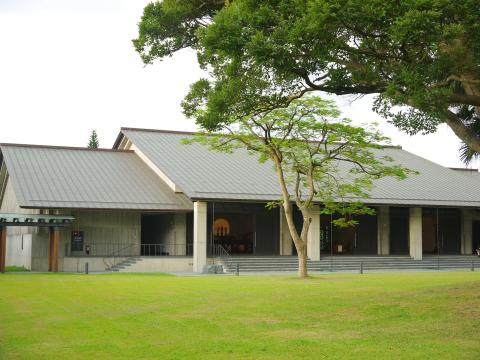
Photos: Lin Ya-ti, Taipei Times
照片:台北時報林亞蒂
The original structure of the Zhai Ming Monastery was preserved through meticulous restoration techiniques. In order to show respect for the historic site, the architects made sure the new building was not higher than the historic one. The monastery features displays of its rich history, including the merits of its past and present abbots, precious historical documents, and ancient calligraphic works and paintings.
Beautiful surroundings can be found in small towns too: you do not have to go out into nature to find them. The tranquil Zhai Ming Monastery is located on the banks of the Dahan River and the ancient path of the Zhai Ming Monastery was built in the Qing Dynasty and has been well preserved. It is an excellent spot for a summertime stroll through its lush growth of trees.
(Lin Ya-ti, Taipei Times)
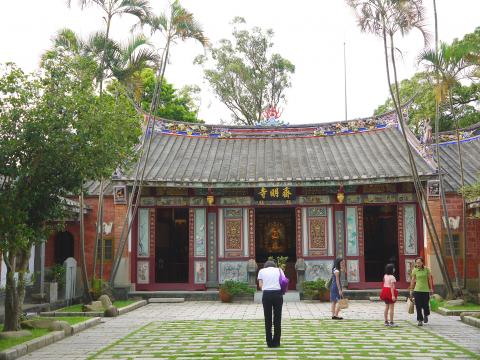
Photos: Lin Ya-ti, Taipei Times
照片:台北時報林亞蒂
炎炎夏日悶熱難耐,該往哪兒找清涼微風與濃密綠蔭?今年三月獲觀光局「台灣十大觀光小城」票選冠軍的桃園縣大溪鎮,有許多歷史上著名的建築,而「齋明寺」則是被公認為鎮上最古老的禪寺。寺院內有許多巨傘老樹,靜謐的空間讓人心靜自然涼。夏夜涼風徐徐,隨著蟬鳴晚課唱誦,訪客或許能感受到禪悅之喜。
建於西元一八五○年的古剎「齋明寺」,於一九八五年被內政部定為三級古蹟,並在一九九九年由已故法鼓山創辦人聖嚴法師承接法務,但也在同年遭遇九二一大地震而受創嚴重。歷經四年的古蹟修復整建,「齋明寺」於二○○九年重新啟用。
除了保有傳統紅磚三合院建築外,法鼓山還在三合院後方,以清水混凝土建造一座新式禪堂,做為「齋明寺」最主要的修行場所。隔著百年老樟樹與扁柏,傳統寺院的繁美與現代禪堂的簡約和諧共存,象徵古今傳承。
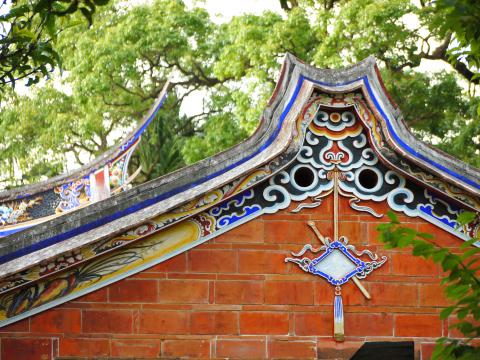
Photos: Lin Ya-ti, Taipei Times
照片:台北時報林亞蒂
歷經縝密修復後,「齋明寺」原建築之樣貌才得以保存下來。為表示對古蹟之尊重,新建築的天際線以不超過舊建築為原則。古蹟內部展示齋明寺歷任住持之事蹟、各項珍貴文物與古書畫等。
不一定要到名山大川,小鎮風光也毫不遜色,幽靜的「齋明寺」,鄰大漢溪畔,其闢建於清朝的「齋明古道」,保有原始自然樣貌,草木扶疏,不失為夏日散步的好去處。
(台北時報記者林亞蒂)
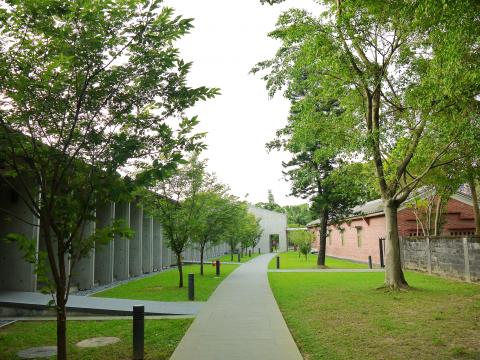
Photos: Lin Ya-ti, Taipei Times
照片:台北時報林亞蒂
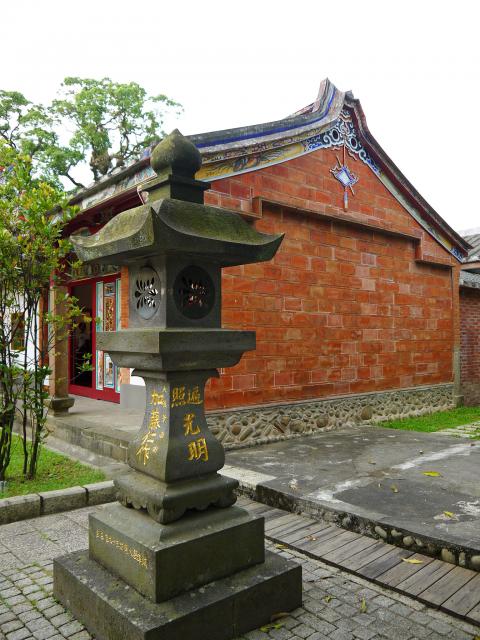
Photo: Lin Ya-ti, Taipei Times
照片:台北時報林亞蒂

William I of Prussia, a passionate painter, often autographed his works with “tormentis pinxit” — “painted in pain” — as a nod to his struggles with gout. Other historical figures like King Henry VIII of England and Benjamin Franklin also suffered from this “disease of kings,” which was common among people indulging in luxurious diets. Gout is primarily caused by high levels of uric acid in the body. Uric acid forms as the body breaks down purines, which are found in foods like red meat and seafood. Normally, the kidneys filter out uric acid. However, if the body produces
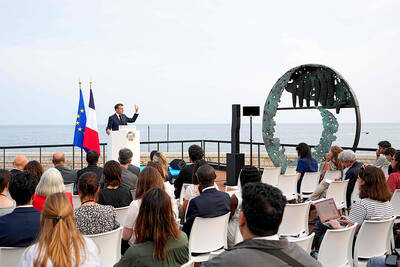
The UN Ocean Conference wrapped up in Nice, France on Friday last week with world leaders taking major steps toward marine protection and vowing a showdown when nations meet to negotiate rules for deep-sea mining next month. But a lack of funding pledges and the total omission of fossil fuels disappointed some observers. The summit was just the third — and largest yet — dedicated entirely to what the United Nations calls an “emergency” in the world’s oceans. The High Seas Treaty, or Global Ocean Treaty, is also known as the Agreement under the United Nations Convention on the Law

A: The National Palace Museum (NPM) has launched an exhibition, titled “From Impressionism to Early Modernism.” There are 81 masterpieces from the Metropolitan Museum of Art on display now. B: The exhibit, held to celebrate the NPM’s centennial, must be so spectacular. A: It includes artworks by 38 artists, such as Renoir, van Gogh, Cezanne, Matisse and Gauguin. B: The Fubon Art Museum has also launched an exhibit featuring a number of artworks of Impressionism, including Monet’s “Water Lilies.” A: And the New Taipei City Art Museum just had its grand opening, so there are even more exhibitions

Continued from yesterday(延續自昨日) https://www.taipeitimes.com/News/lang Living on the ISS is challenging due to the absence of gravity. Astronauts must strap themselves into sleeping bags to prevent floating away while they sleep. They also spend about two hours exercising daily using specialized equipment. Despite this, microgravity can cause muscle loss, bone density reduction and cardiovascular changes. As a result, astronauts require extensive rehabilitation upon their return to Earth. In spite of these difficulties, astronauts often describe their experience on the ISS as life-changing. One of the most awe-inspiring aspects of living aboard the space station is the unparalleled view of Earth. Traveling at